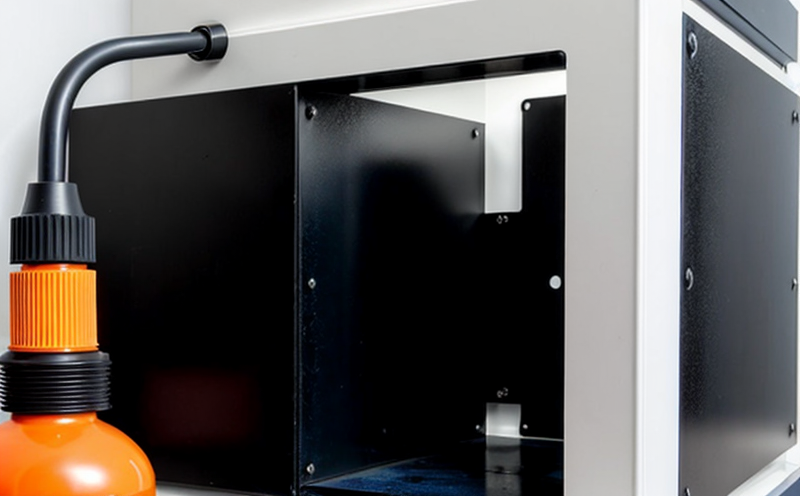ISO 11357 Thermal Analysis of Polymer Based Nanocoatings
The ISO 11357 thermal analysis method is a critical tool in the assessment of polymer-based nanocoatings. This test provides valuable insights into the thermal stability, phase transitions, and glass transition temperatures (Tg) of these materials. It is widely used across various industries including automotive, electronics, construction, and aerospace to ensure product quality and safety.
The process involves heating a sample at a controlled rate while monitoring its heat flow or temperature response. This helps in identifying the onset and completion points of thermal events such as crystallization, melting, and decomposition. The data obtained from this analysis is crucial for optimizing nanocoating formulations to enhance performance under extreme conditions.
Compliance with ISO 11357 standards ensures that products meet international quality benchmarks, which is essential in the global market where uniformity of test methods is critical. This method also aids in research and development by providing detailed information on material behavior under thermal stress, thereby facilitating innovation and improvement.
Preparation of samples for this analysis includes precise measurement and cutting to ensure accurate testing. The sample should be homogeneous and representative of the intended product batch. It is important that any additives or fillers do not interfere with the results. Once prepared, the sample undergoes rigorous calibration checks before being placed in the thermal analyzer.
The equipment used for ISO 11357 testing typically includes a differential scanning calorimeter (DSC) and a thermogravimetric analyser (TGA). These instruments work together to provide comprehensive data on both the thermal stability and weight loss over time. The DSC measures heat flow, while the TGA monitors changes in mass as temperature increases.
The results from this analysis are reported based on specific criteria outlined by ISO 11357. Key parameters include the onset of melting (OnsetTm), peak melting temperature (PeakTm), and total enthalpy change during melting (ΔH_melting). For decomposition, the start point (OnsetT_d), end point (EndT_d), and percentage weight loss are recorded.
This testing procedure is not only beneficial for ensuring product quality but also supports environmental sustainability by optimizing material usage. By identifying the optimal temperature range for nanocoating application, manufacturers can reduce energy consumption during manufacturing processes. Additionally, understanding the thermal stability helps in predicting product lifespan under real-world operating conditions, thereby minimizing waste and promoting sustainable practices.
- Environmental and Sustainability Contributions
- Enhanced durability leading to longer product life cycles
- Minimized energy consumption during production
- Promotion of recycling through better understanding of material behavior
Scope and Methodology
The scope of ISO 11357 thermal analysis extends to the evaluation of polymer-based nanocoatings across various industries. This method is particularly useful for assessing materials used in high-performance applications where thermal stability is critical.
- Sample preparation involves cutting the sample into small, uniform pieces that represent the bulk properties accurately.
- The samples are then weighed and placed into a DSC/TGA furnace.
- The heating rate is set according to the standard procedure (10°C/min).
- Data collection includes monitoring both heat flow and mass changes simultaneously.
The methodology ensures that all parameters are measured consistently, allowing for accurate comparison between different samples or batches. This consistency is vital for maintaining quality control throughout production runs. The results from this analysis can be used to make informed decisions about material selection, process optimization, and product design.
Environmental and Sustainability Contributions
- Reduction in raw material usage through optimized formulation development
- Promotion of recycling initiatives by understanding the thermal properties of recycled materials
- Energy efficiency improvements during manufacturing processes due to better process control
- Extended product lifecycle leading to lower overall environmental impact
The insights gained from ISO 11357 testing enable manufacturers to adopt more sustainable practices. By understanding how nanocoatings behave under different thermal conditions, companies can design products that are not only high performing but also environmentally responsible.
Competitive Advantage and Market Impact
- Enhanced product reliability leading to increased customer satisfaction
- Premium positioning in the market due to advanced testing capabilities
- Strategic advantage in regulatory compliance ensuring uninterrupted operations
- Competitive differentiation through superior quality assurance processes
By mastering ISO 11357 thermal analysis, organizations can gain a significant competitive edge. The ability to accurately predict and control the behavior of nanocoatings under various conditions translates into better product performance and longevity, which in turn enhances brand reputation and market position.





